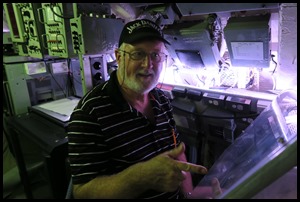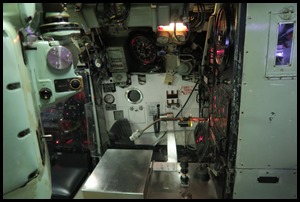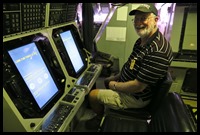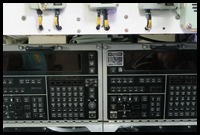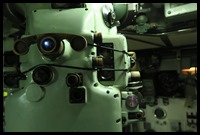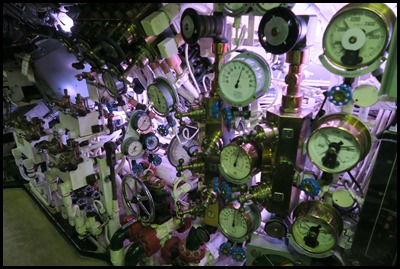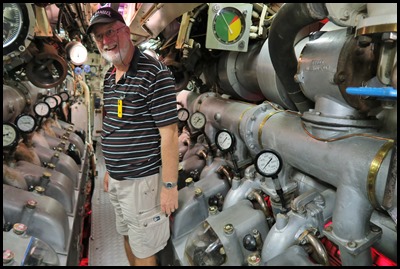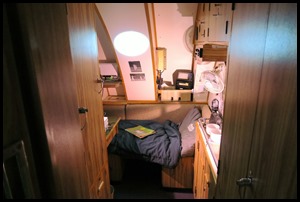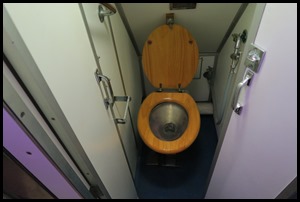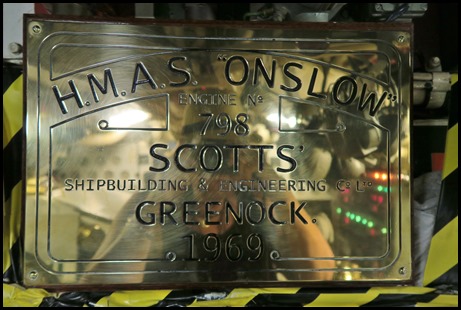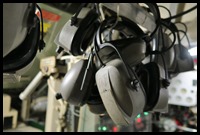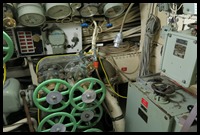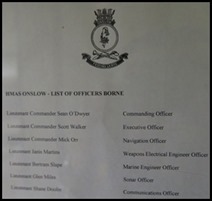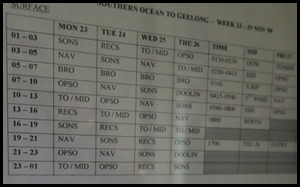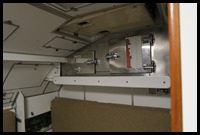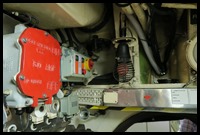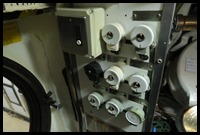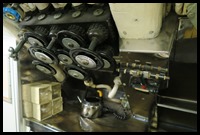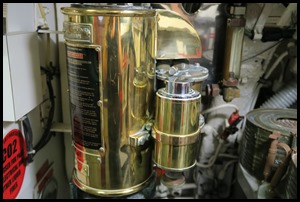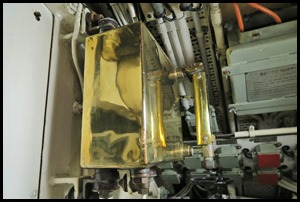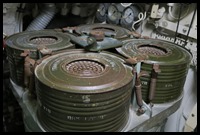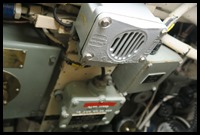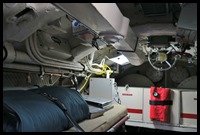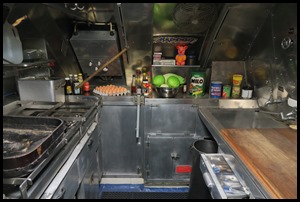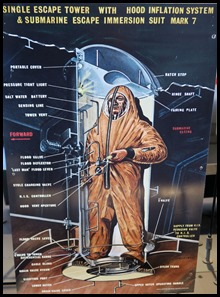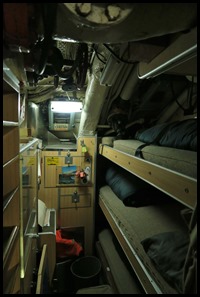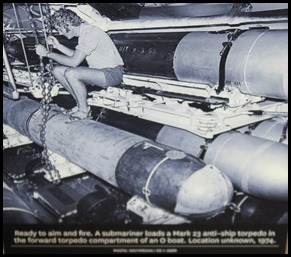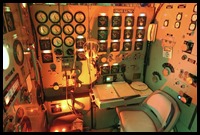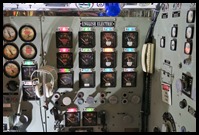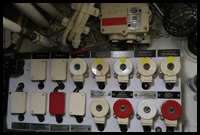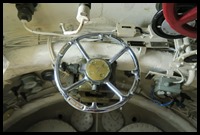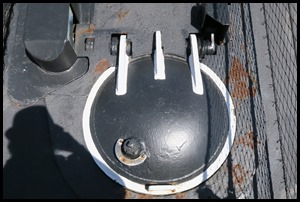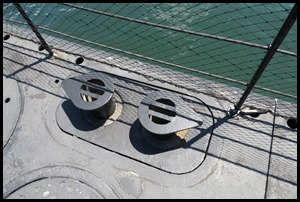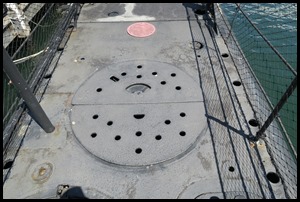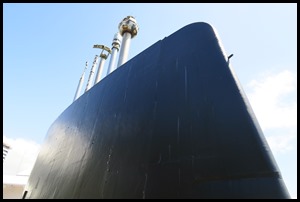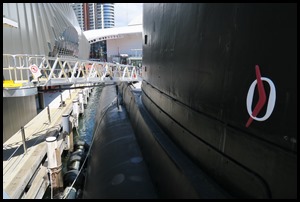Onslow

|
HMAS Onslow –
Stealthy, Silent and Secret Submarine
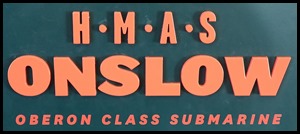  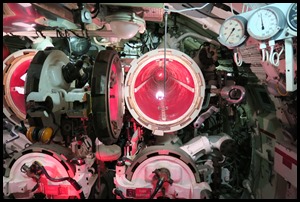  One of the ladies to visit at the
National Maritime Museum, a must and a blog dedicated to all our BARB’s who are
submariners or ex-submariners including our very own Miffy – you’ll all
recognise what’s what. One thing that we noticed immediately was just as on
Beez Neez – where would we be without duct tape.......
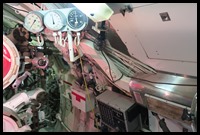 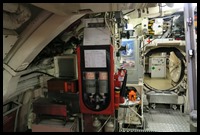 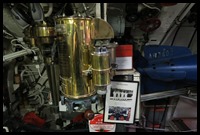 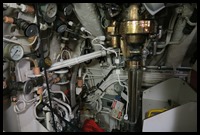 HMAS Onslow served in the
Royal Australian Navy from 1969 to 1999 and was one of six Oberon class
submarines that formed the Australian Submarine Squadron. The British-designed
Oberons were considered to be the most advanced types of conventional submarine,
combining high speed and great underwater endurance with anti-surface vessel and
anti-submarine capabilities. Onslow worked on patrols in the Pacific and Indian
Oceans during the Cold War years and beyond.
Named after the Western Australian
town, Onslow could go to sea for several months and stay underwater for more
than six weeks at a time, periodically using the snort system to draw air in
while running at periscope depth. When submerged, the submarine ran on electric
motors. The diesel generators were used when the submarine was on the surface,
and to recharge the two large batteries which each contained two hundred and
twenty four cells. Onslow was given a
mid-life modernisation refit from 1982-1984, when new attack sonar and
integrated data processing and fire control systems were added. Submarines have an important role in intelligence gathering,
photographic reconnaissance, minelaying, surveillance, anti-submarine warfare,
and hunting enemy surface ships. Being virtually silent, submarines are ideal
for undertaking covert operations in hostile waters.
  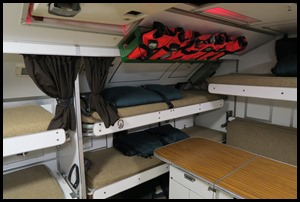 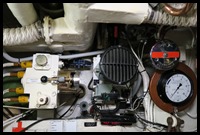 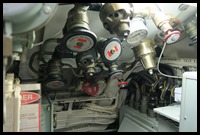 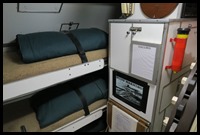  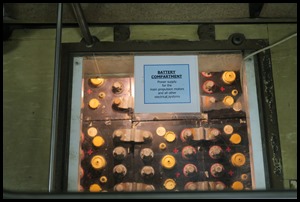 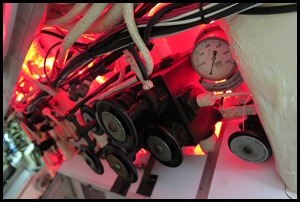 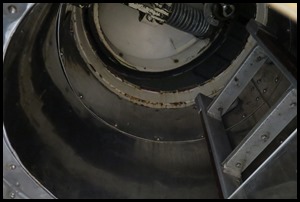  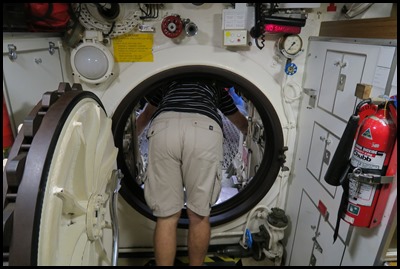  Vital Statistics:
Laid down 1967, launched 1968. Built at Scotts Shipbuilding and Engineering Co.
Greenock, Scotland. Commissioned in 1969 – decommissioned in 1999 when she was
transferred here to the National Maritime Museum. Length 89.90 metres, Beam 8.07
metres. Propulsion – two mechanically supercharged Admiralty Standard Range
diesel generators with two English Electric propulsion motors. Speed – 15 knots
plus submerged, 12 knots on the surface. Maximum depth over 190 metres.
Compliment 60 submariners and 8 officers. Pendant 60.
 Armament: The main armament of Onslow was six 21-inch (53 cm) bow torpedo tubes, capable of firing torpedoes or releasing sea mines. The British Mark 8 torpedo was initially carried by the submarine; this was replaced by the Mark 23. During a refit from 1982 to 1984, Oberon became the first conventionally powered submarine in the world to be fitted with anti-ship missiles; specifically the UGM-84 Sub Harpoon. At the same time, the Mark 23 torpedoes were replaced by the United States Mark 48 wire-guided torpedo. As of 1996, the standard payload of Onslow was a mix of 20 Mark 48 Mod 4 torpedoes and Sub Harpoon missiles. Some or all of the torpedo payload could be replaced by Mark 5 Stonefish sea mines, which were deployed through the torpedo tubes. The submarine's secondary armament consisted of two stern-mounted, short-length 21-inch (53 cm) torpedo tubes: these were intended for use against pursuing submarines, but the development of steerable wire-guided torpedoes shortly after the boat entered service made these redundant, and they were closed off during the 1982-84 refit. The aft tubes fired Mark 20 anti-submarine torpedoes.
An Incident: In 1972, the first major incident of Onslow's career occurred. The submarine was performing dive tests off the continental shelf outside Sydney Heads. One of the boat's company, transferred to the RAN Submarine Service against his will, refused to obey an order to close the valve on forward ballast tank, causing it to overfill with seawater and forcing the submarine into a steep crash dive. The dive took Onslow to a depth of 366 metres (1,201 feet), well beyond the 200-metre (660 feet) safe operating depth of the Oberon class, before another sailor was able to close the valve. Seven tons of water had been taken on by the ballast tank, and with not enough compressed air available to completely empty the tank and allow the submarine to rise, Onslow's company had to rely on the submarine's twin propeller screws to help make it to the surface. The sailor responsible for the incident was beaten by his comrades and removed from the submarine in a straitjacket upon the boat's return to submarine base HMAS Platypus. This incident led the RAN to change submarine service to volunteers only.
ALL IN ALL A LOVELY LADY A NICE, TINY LITTLE GIRL |
